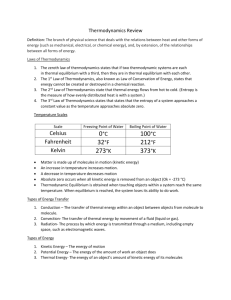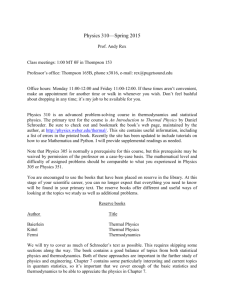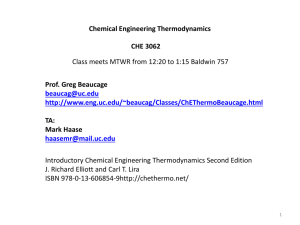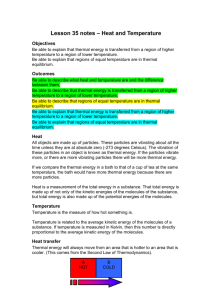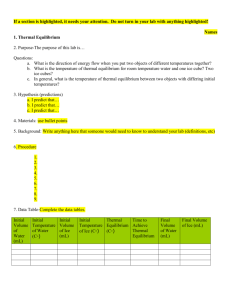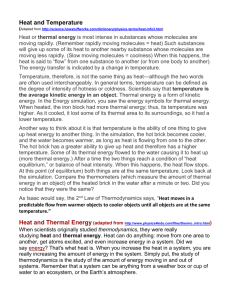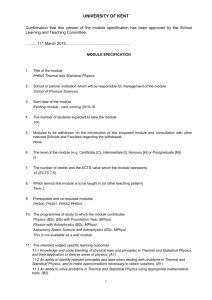Thermodynamics Notes: Energy, Heat, and Equilibrium
advertisement
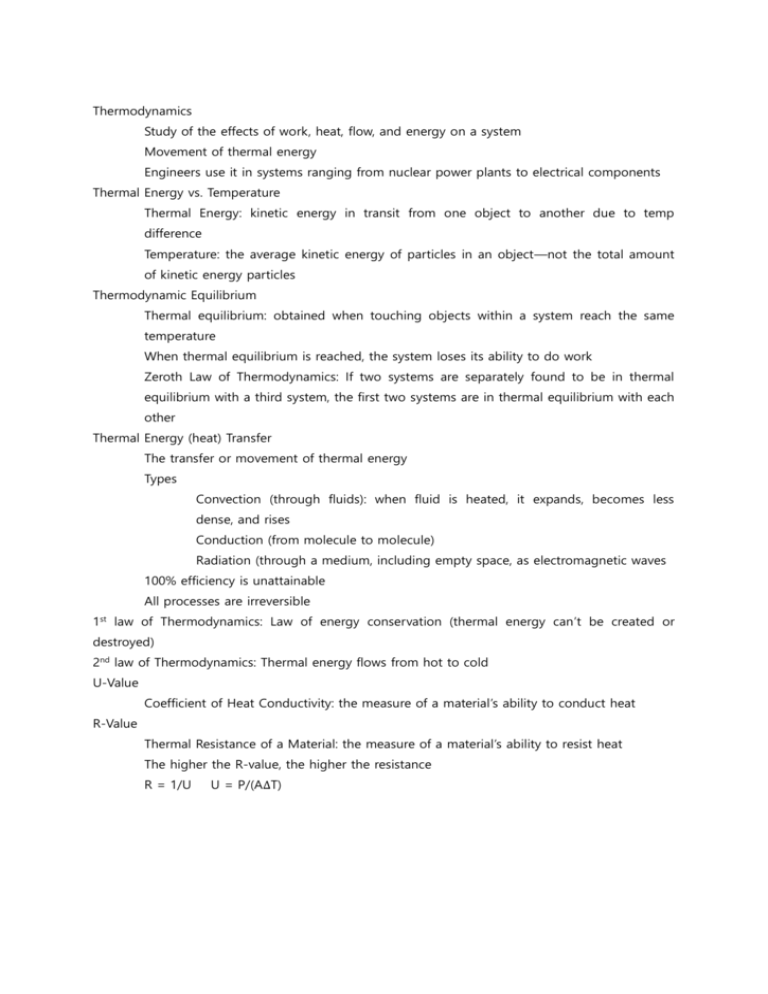
Thermodynamics Study of the effects of work, heat, flow, and energy on a system Movement of thermal energy Engineers use it in systems ranging from nuclear power plants to electrical components Thermal Energy vs. Temperature Thermal Energy: kinetic energy in transit from one object to another due to temp difference Temperature: the average kinetic energy of particles in an object—not the total amount of kinetic energy particles Thermodynamic Equilibrium Thermal equilibrium: obtained when touching objects within a system reach the same temperature When thermal equilibrium is reached, the system loses its ability to do work Zeroth Law of Thermodynamics: If two systems are separately found to be in thermal equilibrium with a third system, the first two systems are in thermal equilibrium with each other Thermal Energy (heat) Transfer The transfer or movement of thermal energy Types Convection (through fluids): when fluid is heated, it expands, becomes less dense, and rises Conduction (from molecule to molecule) Radiation (through a medium, including empty space, as electromagnetic waves 100% efficiency is unattainable All processes are irreversible 1 st law of Thermodynamics: Law of energy conservation (thermal energy can’t be created or destroyed) 2nd law of Thermodynamics: Thermal energy flows from hot to cold U-Value Coefficient of Heat Conductivity: the measure of a material’s ability to conduct heat R-Value Thermal Resistance of a Material: the measure of a material’s ability to resist heat The higher the R-value, the higher the resistance R = 1/U U = P/(A∆T)
